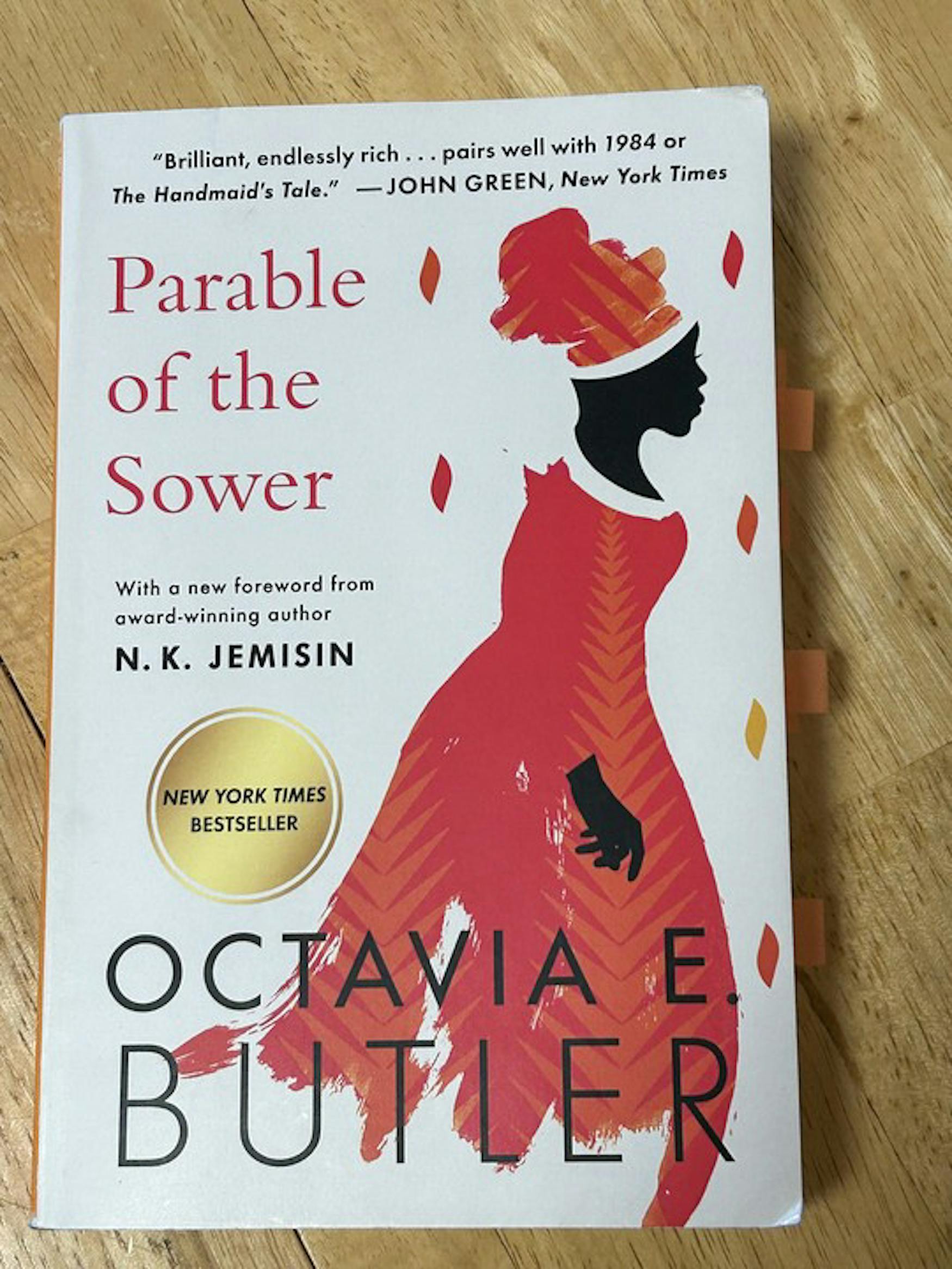Parable of the Sower: A Review
Typically, the imagined setting for a dystopian science fiction novel is the far future — perhaps Earth in the year 3000 or even on an entirely new planet. In contrast, it can be jarring to discover such a novel written in the near future, especially if that near future is this coming summer. Published in 1993, Octavia Butler’s novel “Parable of the Sower” takes place from 2024 to 2027, years that were three long decades in the future but are now the rapidly approaching present.
“Parable of the Sower” is Butler’s tenth novel and was originally meant to be part of a six-part series. However, Butler only wrote one sequel, “Parable of the Talents,” published in 1998 before she died in 2006. She began writing the third book but cited writer’s block as the reason she stopped. As it is, “Parable of the Sower” can be read as a standalone with no trouble.
Butler’s imagined America in 2024 is a society rife with violence torn apart by climate change and economic inequality. The novel follows teenage protagonist Lauren Olamina who must survive on the road after the destruction of her neighborhood. The journey is already perilous enough without Lauren’s condition of “hyperempathy,” which causes her to share the pain and pleasure of others. Throughout her hardships, Lauren clings to her newly invented religion, “Earthseed,” which she spends much of the novel developing. Earthseed’s metaphorical God is change, and the religious teachings stress reactivity and adaptability.
The emphasis on “God is Change” makes sense when considering the novel’s other themes. As a whole, “Parable of the Sower” is an effective commentary on what American society might look like in the future if we refuse to change. In particular, Butler focuses her criticism on racism, classism, and nostalgia. “Parable of the Sower” emphasizes that society fractures along its fault lines in times of crisis. Butler identifies two of these fault lines in American society as race and class. “Parable of the Sower” illustrates what society might look like if divisions between race and class radically increased.
Many characters treat race as a defining characteristic in deciding whether or not to trust one another. Lauren repeatedly mentions that traveling in a mixed-race group on the road is dangerous. In the Earthseed verses, she writes that one must embrace diversity or be destroyed. Regarding class, “Parable of the Sower” exists in an America where the poor are abundant and the rich are very few. Lauren’s neighborhood, which was barely making ends meet, was targeted and then destroyed because they were perceived as being rich. The poor are too busy tearing down one another to bother with those who are actually wealthy — perhaps because the rich have the money to pay for police or other hired protection or because they sequester themselves away behind impenetrable walls while the world outside descends into madness.
Most poignant of all is the commentary surrounding the “politics of nostalgia.” Lauren is often frustrated with the adults around her because of their refusal to let go of the past. To Lauren, this is personal: She has no memory of the America the adults in her life are longing for, and she perceives their refusal to move on a negative effect on their actions in the present. “Parable of the Sower” was written coming out of the ‘90s when the country was transitioning from Reagan to Bush. Right-wing Christian cultural politics had dominated the political landscape and privatization of the economy, or “trickle-down economics,” was on the rise. These issues that Butler saw around her while writing “Parable of the Sower” still plague America today.
Since then, politics have only become more polarizing, especially regarding race and racism, and we still face an ever-increasing class gap. Just a few short years ago, we had a president who built his platform on the politics of nostalgia or “making America great again.” In this vein, “Parable of the Sower” reads as an effective critique of the present moment in America today. Interestingly, Butler never explicitly states what happened to drive American society to the point we see it in “Parable of the Sower.” The implied slow decline into chaos makes Butler’s commentary all the more believable and compelling.
Unfortunately, the most frustrating part of the novel is its protagonist. Lauren’s narration can be difficult. There are multiple instances where she contradicts herself or rapidly changes formerly stubborn opinions for little reason despite her previous obstinacy. Her commitment to preaching Earthseed can also be grating, especially because although Earthseed is a religion, many of its core beliefs sound more philosophic. Some readers may manage to look past this by reminding themselves that Lauren is a teenage girl and not free from the flaws of adolescence. A second way to make her narration less frustrating is to remember she is an unreliable narrator. Every journal entry Lauren writes, she does so with the mindset that her writings will one day be read and used to preach about Earthseed. With this in mind, Lauren would write her journal entries and depict Earthseed as positively as possible. The novel can be read enjoyably while overlooking Earthseed in favor of focusing on other events in the novel, but some readers may find this difficult. That being said, overlooking Earthseed entirely would be a mistake as a reader.
Overall, “Parable of the Sower” is an interesting and thought-provoking read despite the frustration caused by the narrator. Consider giving it a try if you are a fan of dystopian science fiction and want a compelling near-future take on the genre.



Please note All comments are eligible for publication in The Justice.